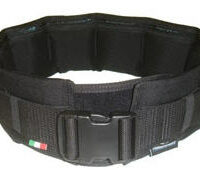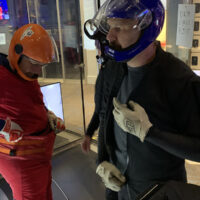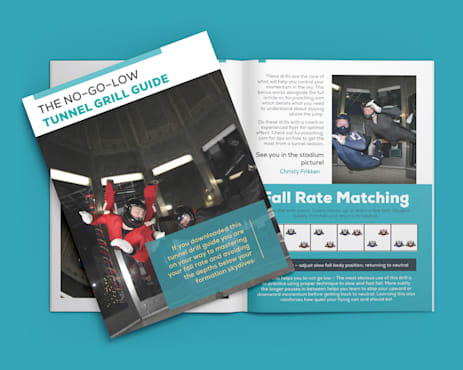How to wear a weight belt
Monday, March 28, 2022

- Christy Frikken
- 3/28/22
- 0
- Basic Flying Skills
You know you need to fall faster for good bodyflight habits and safe successful freefall. You are comfortable with the small wing loading change. You are ready to use a weight belt! Well done!
Now, how do you wear it? Do you slap it on and forget about it?
Different belts
There are a few different styles available with weight belts. A standard belt is most common, being 4-5 inches tall with removable weight packets. The packets work well because it has the advantage of being adjustable. However, it can take time to get the distribution right to avoid bruising your hips or interfere with your handles.
http://www.paragear.com/skydiving/10000145/L11404/PARASPORT-SKYDIVING-WEIGHT-BELT
https://www.chutingstar.com/skydive/skydiving-accessories/weight-belts-and-belly-bands
Another model to consider, especially if you know you will be wearing a lot of lead, is a larger, flatter model with the weight sewn in. You cannot change the amount of weight easily, but it can be more comfortable.
It is a rare modification, but you can get lead pockets built into a rig. If you are a small person and know you will always be jumping with loads of lead, this can get it off your body. Typically, this will not seat everything you need, but it will reduce the amount around your waist. The downside is your rig will be hefty.
There are vests available for lead, but they are not good for FS. They pack in lots of weight, but it distributes the weight to your chest, and it interferes with good bodyflight.
Under or Over?
Should you wear your weights over or under your suit? If you are jumping near water, wear them over your suit. Outside belts allow you to scrap them if you land in an ocean.
If you are not near water, you have the option. Putting it inside your suit keeps everything tucked in but requires a loose-fitting suit. I find that outside is more comfortable, but your mileage may vary.
Dangly bits
If you wear your belt outside, ensure all the dangling straps are tucked away and not flapping around handles. If you have a small string near your hackey, you could grab it along with your pud and not be able to pull. I am sure there are other terrible scenarios these straps could be harmful too.
An easy rule of thumb? Skydiving + uncontrolled dangly bits = bad.
Placing and Balance
Play around with the sizing, tightness, and placement of the belt to find the most comfortable fit. For example, having the belt sit higher or lower on your hips can affect your range and how heavy it feels. To alter its placement, try tightening or loosening the belt.
Distribute the weight packets to minimize harness interference but also comfort. If you have empty pockets, for example, you can keep those by your hip bones.
Some folks like the lead on their back; others want it in the front. Try both, but mind the straps.
Jumping with lead is not super comfortable, but it is preferable to developing bad habits, being unable to stay down, or flying ineffectively with your group. You can try different styles of belts and ways of wearing them to reduce discomfort. And remember, at least you can take your lead off at the end of the day – big flyers carry it around with them all day and night!
Tags: bodyflight





